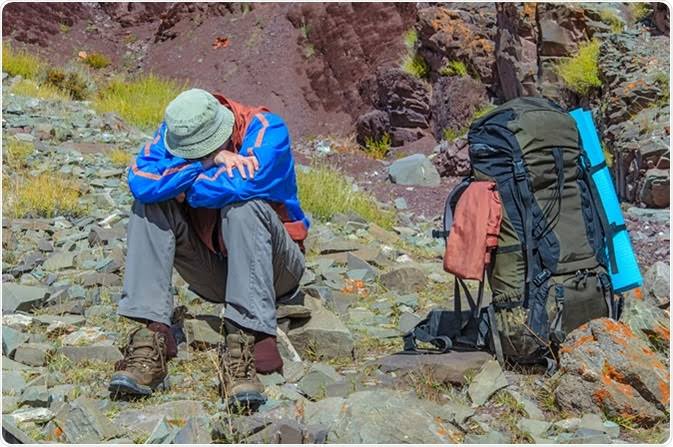How to Avoid Altitude Sickness While Climbing Mount Kilimanjaro
Here are a few things to be aware of before you do it

Dennis Kanuti
What You Need to Know About AMS
Altitude sickness, the mildest form being acute mountain sickness (AMS), is the negative health effect of high altitude, caused by rapid exposure to low amounts of oxygen at high elevation
The symptoms of AMS include:
- loss of appetite
- nausea
- dizziness
- headaches
- breathlessness
- heart palpitations
Many hikers will experience some of these symptoms during their time on the mountain. Take these symptoms seriously and give your body time to rest and recover.
With each rise in elevation, your body has less oxygen to draw upon. So, the air’s getting thinner yet you’re still exerting yourself. Your body can adjust, but it needs time to do so.
Anybody can experience acute AMS when they climb too rapidly and stay more than 12 hours above 2500 meters (8,200 feet). Your rise in altitude during any given 24 hour period represents the ultimate determining factor when it comes to developing AMS. Once you pass 3,000 meters (about 9800 feet), your chances of getting AMS increase each time you climb more than 300 meters (980 feet) between camps.
Avoiding Altitude Sickness at Mount Kilimanjaro.
Acclimatize and Take It Slowly
Altitude sickness is avoidable. The only surefire way to do is to take your time climbing Kilimanjaro. Opting to save money by climbing the mountain as quickly as possible is a false economy: the chances are you will have to turn back because of altitude sickness and all your efforts (and money) will be wasted. According to the Expedition Advisory Committee at the Royal Geographical Society, the recommended acclimatization period for any altitude greater than 2500m is to sleep no more than 300m higher than your previous night’s camp, and to spend an extra night at every third camp.
Among the most important things you can do prior to climbing Kilimanjaro is give your body plenty of time to acclimatize to higher elevations. If possible, spend time training at elevations of increasing height before you ever reach Tanzania. Experts also recommend climbing nearby Mount Meru first in order to prepare your body for the rigors of Kilimanjaro.
Factors like stress, fatigue, and illness can predispose you to AMS. So, make sure that you feel healthy, thoroughly rested, and calm before making the climb. The better your health, the more likely you’ll avoid AMS.
Of course, that doesn’t mean you should start pushing up the mountain at a frenetic pace. Remember what we said about young, fit men as most likely to suffer from AMS? They go too fast and ignore their body’s limits.
Kilimanjaro represents a challenging climb. You must respect the mountain and listen to your body. As they say on the mountain, “Pole, pole or poor poor!” Take it slow and give your body time to recover or risk feeling “poor.”
Stay Positive
So much of climbing remains mental. Don’t psyche yourself out and start assuming that every headache you get or cough you have indicates a life-threatening condition. Once you get on the mountain, listen to your body keep your thoughts positive and constructive.
Mild AMS doesn’t feel great. It’s akin to a hangover. So, listen to your body and take extra time to rest and recover.
The two simple acts of relaxing and thinking positively will up your odds of a successful climb. Focus on reaching the summit at a slow, steady pace.
Avoiding altitude sickness requires patience, preparation, and knowledge. With a better understanding of what causes AMS and how to avoid it, you can take practical measures to ensure your ascent of Mount Kilimanjaro remains safe and successful.
Interested in more tips for climbing Kilimanjaro?
Follow our Blogs & Tips to stay on top of the latest trends in kilimanjaro Trek.
Get you Free Copy Below On Things to Concider before Climbing Mt. kilimanjaro
Things to Consider before climbing Mt. Kilimanjaro
Thinking of Climbing Mount Kilimanjaro? You Don’t want to miss that

